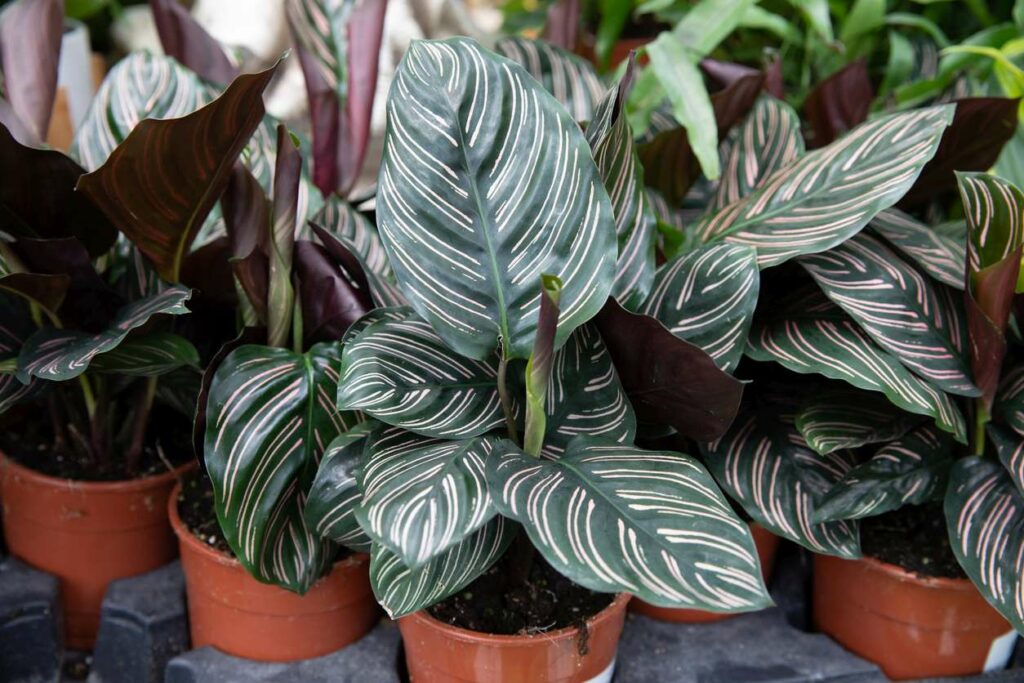
Source www.diys.com
Welcome to our comprehensive guide on calathea plant care. Calathea plants are beloved for their vibrant foliage and unique patterns, making them a popular choice for indoor gardening enthusiasts. However, these stunning plants require specific care to thrive and showcase their full beauty. In this article, we will delve into the essential aspects of calathea plant care, including proper watering, lighting conditions, humidity requirements, and much more. Whether you are a novice gardener or an experienced plant lover, this guide will provide you with all the information you need to ensure your calathea plants are healthy and thriving.
1. Choosing the Right Conditions for your Calathea Plants
Proper Lighting
Calathea plants thrive in bright, indirect light. While they enjoy natural light, direct sunlight can damage their delicate leaves. Place your calathea plant near a north, east, or west-facing window to provide it with the ideal lighting conditions. If you have limited natural light, you can also use grow lights to supplement the plant’s light requirements.
Optimal Temperature and Humidity
Calathea plants prefer warm temperatures ranging between 65-85°F (18-29°C). Avoid exposing them to cold drafts, as it can lead to leaf discoloration and growth issues. Additionally, calathea plants are native to tropical regions and thrive in high humidity environments. Regularly misting the foliage or using a humidifier can help maintain the required humidity levels.
2. The Importance of Proper Watering Techniques
Water Quality and Frequency
One of the key aspects of calathea plant care is providing them with adequate water. However, it’s crucial to strike the right balance to prevent overwatering or underwatering your plants. Use filtered or distilled water, as calathea plants are sensitive to chemicals commonly found in tap water. Water your calathea thoroughly when the top inch of the soil feels dry, but avoid letting the plant sit in waterlogged soil.
Drainage and Potting Soil
Ensure that your calathea plant is potted in a container with proper drainage holes to prevent water from accumulating. Choose a well-draining potting mix that retains moisture without becoming soggy. A mixture of peat moss, perlite, and potting soil works well for calathea plants.
3. Maintaining Healthy Foliage and Preventing Common Issues
Pruning and Removing Yellowing Leaves
Regularly inspect your calathea plant for yellowing or damaged leaves. Prune these leaves using clean, sharp scissors or gardening shears to promote new growth and maintain the plant’s overall health. Removing yellowing leaves also helps prevent the spread of diseases or pest infestations.
Dealing with Pests
Calathea plants are relatively resistant to pests, but occasionally they may face issues such as spider mites or mealybugs. If you notice any signs of pests, such as webbing, tiny insects, or sticky residue on the leaves, act promptly. Isolate the affected plant, gently wipe the leaves with a mild soap solution, and rinse thoroughly to get rid of the pests.
Calathea Plant Care: Quick Reference Table
| Aspect | Requirements |
|---|---|
| Light | Bright, indirect light |
| Temperature | 65-85°F (18-29°C) |
| Humidity | High humidity; mist regularly |
| Watering | Thorough watering when top inch of soil is dry |
| Water Quality | Filtered or distilled water |
Frequently Asked Questions about Calathea Plant Care
Q: How often should I fertilize my calathea plant?
A: Calathea plants benefit from monthly fertilization during their active growing season, typically spring and summer. Use a balanced, water-soluble fertilizer diluted to half strength and apply it according to the manufacturer’s instructions.
Q: Are calathea plants toxic to pets?
A: Yes, calathea plants are considered mildly toxic to cats and dogs. Keep them out of reach of curious pets and consult a veterinarian if you suspect ingestion.
Q: Why are the leaves of my calathea plant curling?
A: Curling leaves in a calathea plant can indicate either underwatering or low humidity. Check the soil moisture levels and adjust your watering routine accordingly. Also, increase humidity levels around the plant by misting or using a humidifier.
Q: Can I propagate my calathea plant?
A: Yes, calathea plants can be propagated through division. Gently remove the plant from its pot and separate the rhizome into sections, ensuring each section has healthy roots. Plant these divisions in separate pots and provide them with appropriate care.
Q: Why are the edges of my calathea’s leaves turning brown?
A: Brown leaf edges are often caused by low humidity levels or exposure to cold drafts. Increase humidity around the plant and ensure it is placed away from drafty windows or vents.
Conclusion
In conclusion, calathea plant care requires attention to specific details, including lighting, temperature, humidity, watering techniques, and maintenance practices. By providing your calathea plants with the ideal conditions and regular care, you can enjoy their stunning foliage and vibrant patterns for years to come. We hope this guide has equipped you with the necessary knowledge to nurture and maintain healthy calathea plants in your home or garden. Happy gardening!